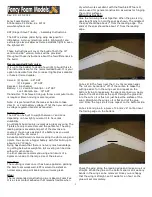
E
MERGENCY
P
ROCEDURES
R
EVISION
:
D
ATE
:
P
AGE
:
-
12/29/04
11
Copyright
2004 Glasair Aviation, LLC Arlington, Washington All rights reserved
within normal ranges. Also, check the mixture setting, carb heat,
magnetos, etc. If none of these items alleviates the problem, make a
precautionary landing at the nearest airport and troubleshoot the
problem.
3-4.2 F
ORCED
L
ANDING
W
ITHOUT
E
NGINE
P
OWER
As soon as you have determined that the engine will not restart after an
engine failure, begin to look for a suitable landing field. If time permits,
check your charts for airports in the immediate vicinity; it may be
possible to land at one if you have sufficient altitude. If possible, notify
air traffic control of your location, difficulty and intentions, or transmit
a distress call on 121.5 MHz.
When you have located a suitable field, establish a spiral pattern around
the field. Try to be at 1,000 feet above the field at the downwind
position to make a normal approach. Even if you are forced to land
away from an airport, it is best to fly a standard pattern with
downwind, base and final legs. This will help you make correct altitude
and approach-speed judgments for an unknown landing site.
Remember that the engine-out glide will be somewhat steeper than the
engine-idle glide that you are used to. Always leave yourself enough
altitude and airspeed to clear obstacles. We recommend leaving the
flaps retracted until you are assured of making your intended landing
spot. If you are too high on approach, however, extend flaps or slip the
airplane. We recommend always using flaps for the final approach, if
possible, to minimize the touchdown airspeed.











































